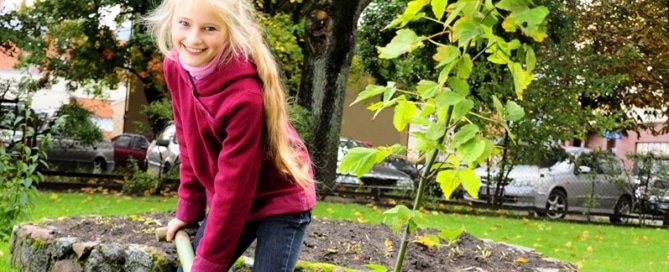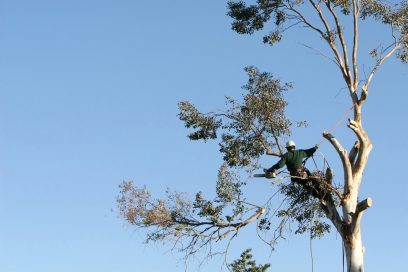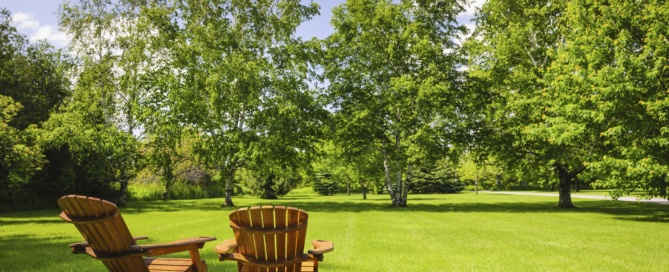Monthly Archives:
Need More Arborist Advice? Read our Guest Posts on the Arbor Day Foundation Website!
Here at Friendly Tree Service, we are proud to provide expert tree care services to our customers, both on and off the field. With nearly 30 years experience in New Jersey tree care, we know trees inside and out – it’s what we do.
In our commitment to educating tree owners and tree stewards on keeping their trees friendly, we have put together tips and resources in partnership with our friends at the Arbor Day Foundation.
Read our tree care posts on arborday.org.
And remember – if you have questions about your tree’s health, tree pruning or tree removal, we offer free tree hazard and awareness assessments to tree owners located in our service area.
Benefits of Hiring a NJ Board of Tree Experts Registered Business
A Licensed Tree Care Operator (LTCO) is a person who has been examined or who has the required experience to be able to acquire the license and are competent in the knowledge and experience of tree pruning, repairing, brush cutting or removal, tree removal, and stump grinding or removal all with safety in mind. These professionals demonstrate high ethical and moral standards in the practice of tree care and are licensed by the New Jersey Board of Tree Experts. Licensed Tree Care Operators must obtain continuing educational credits over their licensing period, thereby insuring LTCOs are up-to-date on new information, skills and techniques in the tree care profession.
Services offered by Licensed Tree Care Operator include:
Tree Maintenance (Pruning and Repairing)
Tree Removals, Brush Cutting or Removal
Stump Grinding or Removal
Read more on the NJTreeExperts.org website.
Why Fall is the Best Time for Tree Planting in New Jersey
As we wave goodbye to summer and welcome the colorful days of autumn, it’s not quite time to put away the garden tools. In addition to cleaning up the yard – removing debris and raking up spent leaves – you might want to add tree planting to your to-do list this fall.
Here at Friendly Tree, we talk a lot about the benefits trees provide to a home or property – including reducing energy bills and increasing property value. One of the most important factors in determining when to plant trees is the climate (in addition to the tree planting site).
Trees need the right combination of temperature and moisture to establish a healthy root system for proper growth.
What Makes Fall a Good Time to Plant?
Newly planted trees need a little extra attention to get them off to a good start. Remember – in many cases, your tree has lost a good amount of its root system during transplanting.
In most areas of the U.S., the dry days of summer have passed but freezing temperatures have not yet arrived. The moderate daytime temperatures, cool nights, warm soil and increased rainfall means right now is the perfect time for tree planting in New Jersey.
Leaves prefer cooler, more moderate temperatures because the summer sun can drain energy from the leaves as well as the rest of the tree. Underground, the warm soil accelerates new root growth for a healthy root system before the tree goes dormant.
With the cold months ahead, your new tree can shift its resources into developing its root system and storing nutrients instead of producing new foliage. Once spring arrives, your new tree’s roots will be vigorous and well-established, giving it a better chance of getting through the summer months.
Just don’t wait too long – your trees need time to acclimate to their new location. Sudden frigid temperatures soon after planting can stress a young tree. We recommend getting your new tree in the ground before mid-October.
What About Summer?
Some homeowners make the mistake of thinking that all landscaping tasks should happen in the summer, when the grass is green and trees have fully leafed out.
While it is possible to plant in the summer, trees will require extra watering and may show signs of stress from the heat and intense sun. In fact, trees can actually get sunburned (known as phototoxic burn)! When trees are stressed, they are more susceptible to pests, diseases and overall poor growth.
Can I Plant in the Spring?
Yes, you can. In fact, spring is the second best time of year for tree planting. In the springtime, when the risk of a hard frost has passed, temperatures are generally mild and trees have a chance to grow all spring, summer and fall before settling down for the winter.
At this time, however, they must produce a flush of new leaves and develop their roots at the same time. This intense growth can be taxing on a young tree and also requires extra watering, especially during dry spells.
How do I Choose a Tree Species?
Friendly Tree can help! Give us a call and we can help you determine which trees will do best in our area of New Jersey and in your specific planting site.
You can also visit the Arbor Day Foundation website and try out their helpful Tree Wizard tool, which gives you recommendations based on your property’s growing conditions, hardiness zone and personal preferences.
When deciding on tree species, it’s important to think about how much space (vertically and horizontally) your tree will have and how much water it will receive in that particular location. Choosing a tree based on the site requirements will give you a better chance at success.
Regardless of tree type, don’t forget to water during the winter! Some winters can turn out to be very dry, so keep an eye on soil conditions and water your new tree when needed. Even though the tree is dormant, its roots still need moisture to continue to grow.
Need help with tree planting? Call the New Jersey tree planting experts at Friendly Tree.
We also invite you to explore more of our blog for arborist advice on watering, mulching and pruning your new tree.
Tree Pruning and Removal: Why You Should Hire a Certified Arborist
As a home or property owner, you’re familiar with the seemingly never ending expenses that crop up throughout the year. While it is certainly wise to learn a few skills and accomplish some of these tasks on your own, tree pruning and removal should not be on your DIY list.
Tree trimming and removal are dangerous tasks. In fact, the chance of injury for tree care professionals is three times higher than for those in the police or fire industries. (Source) When it comes to the trees on your property, play it safe and hire a professional.
Four Reasons to Hire a Certified Arborist
1. Improper pruning causes more harm than good and can even kill your tree.
We have a saying here at Friendly Tree Service: “Pruning is a science as much as it is an art.” In fact, it’s better not to prune at all than to prune incorrectly. Every year, more trees are killed or damaged from improper pruning than from insects and pests.
Each individual tree has its own requirements as far as which cuts need to be made, and where. A skilled arborist knows which limbs are weak or diseased, and how they should be trimmed. He knows how to make training cuts to develop the tree’s natural shape or fill in an open area, and he knows how to eliminate weak spots so that the rest of the tree grows healthy and strong.
Trained arborists also understand when minor trimming or aggressive pruning is needed, and they know how to properly remove dead or diseased trees safely – without endangering themselves, other people or the property.
2. Tree pruning and removal is more dangerous than you think.
Unfortunately, many well-meaning people think as long as you have a good saw, anyone can prune a tree. This line of thinking can lead to serious injuries and even fatalities from falls, falling trees or branches, contact with power lines and injuries from cutting equipment.
Still not convinced? Here are some statistics provided by ArborGlobal.com:
- The risk of serious accident for a tree worker is 1:120
- Tree workers experience 6 deaths per 100 accidents
- The fatality rate in Arboriculture is 35 deaths per 100,000 workers per year, compared to the average fatality rate for all industries of 4 deaths/100,000 workers per year
Sometimes trees only show minimal signs of damage; it takes a highly trained eye to know if the tree is hazardous and poses a serious risk. A trained professional understands how to recognize a hazardous tree and the safest method to remove it. Certified arborists, like those at Friendly Tree, have been trained in safe tree pruning and removal practices and know how to limit the impact to your property.
3. Arborists have the necessary equipment and training.
Professional arborists have tree cranes that allow them to reach large or difficult to access trees and branches. At Friendly Tree, our crane can reach more than 150 feet away and can lift up to 42 tons! Our arborists have the necessary training and experience to handle our advanced tree care equipment without injuring themselves or others.
At Friendly Tree, we follow the highest ANSI Z133 and OSHA standards for workplace safety, which are recognized in the U.S. as the primary safety standards for pruning, repairing, maintaining or removing trees or brush. These standards are reviewed and updated every five years and ensure that trees and equipment are handled in the safest way possible.
4. A certified arborist will have liability and insurance that protect you and your assets.
Imagine if a large, heavy branch crashed down on your roof – or your neighbors’ – during tree pruning. Are you protected?
A reputable tree care service will carry liability insurance, which protects you and your property from damage, and workers compensation insurance, which protects tree care professionals in the field. Any arborist you hire should have a minimum of $1,000,000 in liability and workers compensation insurance. Check to make sure your name and address are added to the Certificate of Insurance before any work has begun.
At Friendly Tree, we don’t cut corners – our certified arborists put the safety of you, your home and your property first, not our bottom line. Our stringent adherence to ANSI standards and our crew’s combined 239 years of experience means we can guarantee our work is safe and of the highest quality.
Need help with tree pruning or removal? Give us a call. We can recommend the most appropriate action for the trees in your landscape, and our inspections and assessments are always free.
Your Tree Care Checklist for Summer
There’s a lot to enjoy in the summer ? but there’s also a lot of work to do. When it comes to your trees, there are a few jobs you can do now to ensure a vibrant and healthy growing season and keep your trees strong going into the upcoming winter.
First things first ? inspect your trees.
Winter frosts and heavy snows can do a number on your trees. Inspect all of the trees on your property for damage, like winter burn. This happens when a tree does not receive enough moisture in the fall and cold winter winds dry out the leaf tissue. If you notice vertical cracks in the tree’s bark, you may be looking at sun scald, which can eventually lead to decay. Sun scald is more likely to be a problem with younger, thin-barked trees and occurs in the winter and spring months.
Additional signs of damage include abnormal leaf size, off-color bark and oozing sap. Any severely damaged or dead branches or trees should be removed.
Check for pests and diseases.
Unfortunately, trees are not immune from getting sick or overrun with pests. Insects tend to target vulnerable trees which are already weak from stress. Aphids are a common issue, notable for the sticky residue they leave behind after munching on tree leaves and stems.
The Emerald Ash Borer has caused devastating damage throughout most of the country. If you have Ash trees on your property, look for signs of dead branches starting at the top of the tree, and small D-shaped holes in the tree’s bark where the beetles exit in June. Trees with bad infestations may lose a third to a half of their branches in one year. The U.S. Forest Service operates an informative website on the Emerald Ash Borer, which you can find here.
Proactive care goes a long way in keeping your trees free from pests and diseases. If your tree has a bad infestation, it may need to be removed by a professional. Look for a certified arborist who meets the criteria of the International Society of Aboriculture.
Pick up the rubble.
Take advantage of the warm weather to pick up old leaves and twigs, fallen branches, or anything else that may be littering the floor of your landscape. Be especially careful to remove diseased material, and DON’T compost it; throw it in the trash.
Get out the pruning shears.
Now is the time to prune those dead or diseased branches you noticed in your inspection. Trees don’t try to repair or regrow injured or diseased wood; instead, they stop sending resources to the damaged tissue.
Pruning allows the tree to put energy into its healthy branches, it improves airflow and it can even lower the risk of insect infestation. If you are dealing with very large or very high dead branches, or branches that pose a risk to structures, vehicles or people, make sure you consult a professional first.
Feed your trees.
After a long, hard winter, trees are often desperate for nutrients. Help them recover and put their energy into new growth with a slow-release fertilizer. Healthy trees have the best defense against disease and insects.
Know how to water.
As the days become longer and hotter, it’s important to give your trees adequate moisture. Following a consistent watering schedule that mimics rainfall (a slow, deep soak) is the best bet. Established trees need one gallon (or one inch) of water each week and younger trees may need twice as much. Consider installing a drip line below ground and don’t water in the afternoon, when moisture can be lost to evaporation.
Apply new mulch.
Mulch provides so many benefits to your trees and can be a lifesaver in the hot summer. Add two to four inches of mulch around the base of each tree, being careful not to pile it up around the trunk (this is called “volcano mulching” and can kill your tree). In addition to retaining moisture and keeping soil temperatures cool, mulch provides added nutrients to the soil.
If the warm weather is calling to you, go ahead and answer. Dust off those gardening gloves and give your trees the attention they need to make it through the long summer.
Recent Posts
Archives
- August 2022
- June 2022
- May 2022
- April 2022
- March 2022
- February 2022
- January 2022
- December 2021
- November 2021
- September 2021
- August 2021
- July 2021
- June 2021
- April 2021
- March 2021
- February 2021
- January 2021
- December 2020
- November 2020
- October 2020
- September 2020
- August 2020
- July 2020
- June 2020
- May 2020
- April 2020
- January 2020
- December 2019
- November 2019
- October 2019
- September 2019
- August 2019
- July 2019
- June 2019
- May 2019
- April 2019
- March 2019
- February 2019
- November 2018
- September 2018
- August 2018
- July 2018
- June 2018
- May 2018
- April 2018
- February 2018
- September 2016
- August 2016
- July 2016
- June 2016
- May 2016
- April 2016
- November 2015
- August 2015
- March 2015






Recent Comments